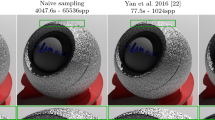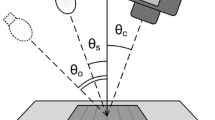One of the most important criticisms that can be made concerning synthesized images is the brand new and too clean aspect of objects. Surface color modifications can be used to introduce dirtiness or other aging-linked characteristics. Also, techniques such as bump or displacement mapping allow users to improve surface aspects by introducing geometrical perturbations. In parallel, the bidirectional reflectance distribution function (BRDF) is a crucial factor in achieving a high degree of realism. It turns out that surfaces are very often covered by defects such as scratches that are related to both textures and BRDFs due to their size. Scratches do not always affect the apparent geometry but nevertheless can remain strongly visible. None of the previously mentioned methods is suited for rendering these defects efficiently. We propose a new method, based on extensions to existing BRDFs and classical 2D texture mapping techniques, to render efficiently individually visible scratches. We use physical measurements on "real objects" to derive an accurate geometric model of scratches at small scale range (roughness scale), and we introduce a new geometric level between bump mapping and BRDFs. Beyond providing graphical results closely matching real cases, our method opens the way to a new class of considerations in computer graphics based on defects that require the coupling of both BRDFs and texturing techniques.
Similar content being viewed by others
Explore related subjects
Discover the latest articles, news and stories from top researchers in related subjects.Author information
Authors and Affiliations
Rights and permissions
About this article
Cite this article
Merillou, S., Dischler, J. & Ghazanfarpour, D. Surface scratches: measuring, modeling and rendering. Visual Comp 17, 30–45 (2001). https://doi.org/10.1007/s003710000093
Issue Date:
DOI: https://doi.org/10.1007/s003710000093




